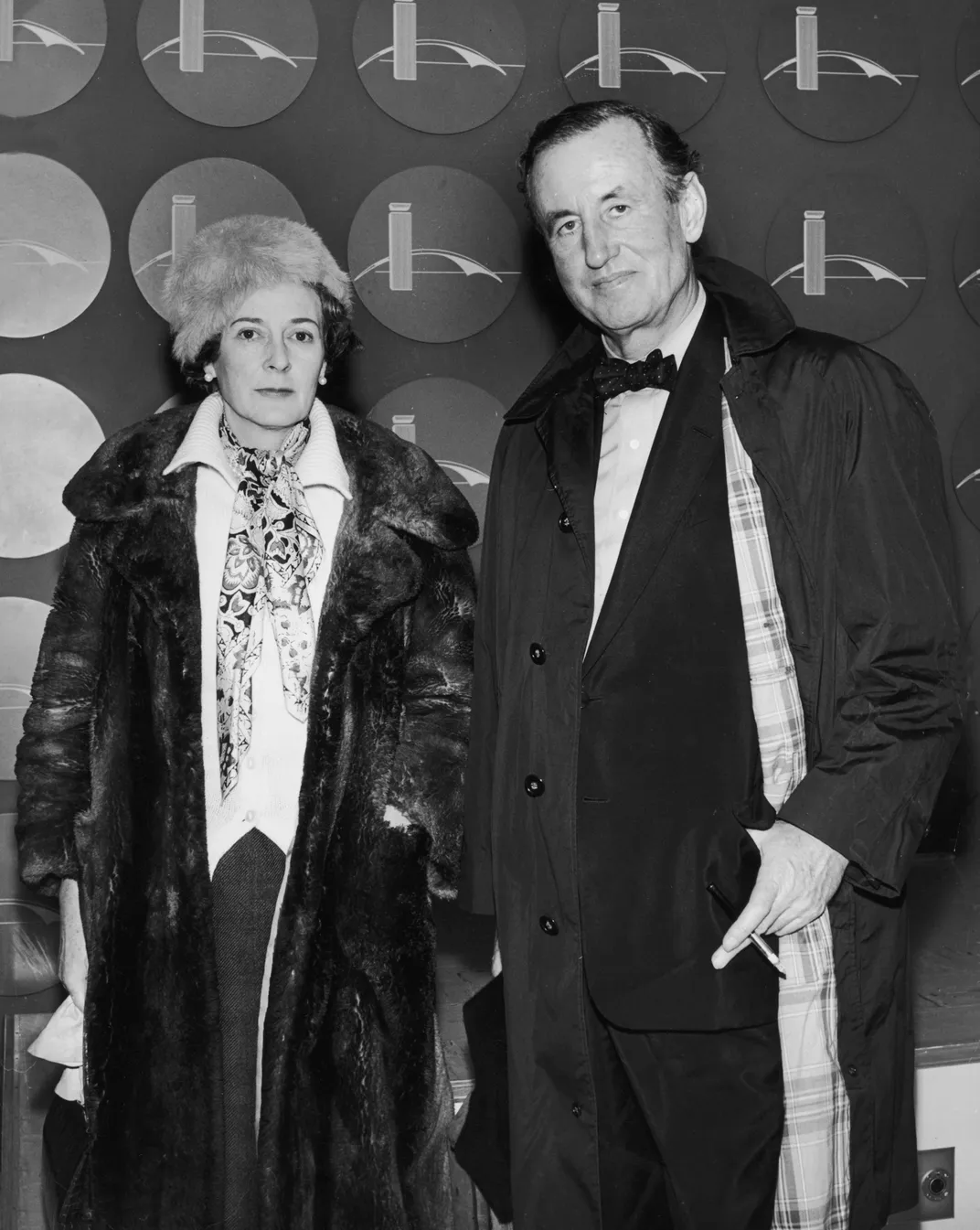For Sale: Trove of Tempestuous Letters Exchanged by Ian Fleming and His Wife, Ann
“In the present twilight, we are hurting each other to an extent that makes life hardly bearable,” wrote the James Bond author in one missive
/https://tf-cmsv2-smithsonianmag-media.s3.amazonaws.com/filer/dd/85/dd857622-ab0c-4ac8-89fc-ec539ccac679/gettyimages-80142743.jpg)
When Ian Fleming married his wife, Ann, in 1952, they had already been lovers for nearly 15 years. The pair’s relationship was by turns passionate, tender, stormy and miserable—a complicated dynamic encapsulated in a remarkable series of letters heading to auction next month.
As Mark Brown reports for the Guardian, Sotheby’s is selling a collection of letters exchanged by the James Bond creator and his long-term partner over the course of two decades. The epistolary trove, which is expected to fetch between £200,000 to £300,000 (around $257,000 to $385,000), reveals intimate details of the couple’s life together, from the heady days of their secret dalliances to the difficult final years of their marriage.
Fleming met Ann, then known as Ann O’Neill, during a 1934 visit to the Stanway House estate in Gloucestershire, England. At the time, he was slogging through a banking job in London. She was a 21-year-old woman of prominent stock married to an equally prominent man: Shane, 3rd Baron O’Neill. But by 1939, Fleming and Ann had become lovers.
“I thought Ian original and entertaining,” Ann said of the man who would become her husband. “He was totally unlike anyone else I had ever met.”
The burgeoning author continued to see multiple girlfriends, according to Sotheby’s, and Ann maintained a relationship with newspaper magnate Esmond, Viscount Rothermere, who became her second husband in 1945. But throughout this period, the two expressed an acute longing for each other—and even explicit eroticism.
“I long for you even if you whip me because I love being hurt by you and kissed afterwards,” Ann wrote to her lover in the 1940s.
The tenor of the couple’s relationship shifted in 1948 after Ann, still married to Rothermere, gave birth to Fleming’s daughter. The baby was premature and lived for just eight hours. Fleming sent Ann a series of gentle, mournful letters written on the stationary of the resort where he played golf with her husband.
“I have nothing to say to comfort you,” reads one missive. “After all this travail and pain it is bitter. I can only send you my arms and my love and all my prayers.”

Ann’s marriage began to fray (as she informed Fleming, “It is all over London that E is not going to tolerate us any longer”), and the longtime lovers wed in 1952. Their son, Caspar, was born the same year.
To celebrate, Fleming purchased his famed gold typewriter, which he then tested out in a letter to Ann.
“My love,” he began, “This is only a tiny letter to try out my new typewriter and to see if it will write golden words since it is made from gold.”
Fleming published his first James Bond book—titled Casino Royale, the novel was a smash-hit spy thriller centered around a dashing protagonist—in 1953. The author often joked that he began writing the series in 1952 to distract himself from his impending marriage. But Gabriel Heaton, Sotheby’s specialist in books and manuscripts, says Ann inspired the fictional character in other ways. For one, Fleming wanted to make money “for a woman who was used to being unthinkably rich.” And Bond, who is orbited by a string of beautiful women, served “as an outlet for [Ian’s] libido and imagination.”
Marriage seemed to dampen the spark of the couple’s relationship. Neither was faithful. “[Y]ou mention ‘bad old bachelor days,’” Ann complains in one letter to her husband. “[T]he only person you stopped sleeping with when they ceased was me!” In addition to barely tolerating Ann’s infidelities, Fleming resented his wife’s active social life, which left him feeling isolated
“In the present twilight,” the author said, “we are hurting each other to an extent that makes life hardly bearable.”
Despite their marital troubles, the pair continued to confide in each other about the everyday details of their lives: work, travel, gossip about their social circles. Fleming liked to spend the winters writing his Bond books at GoldenEye, his home in Jamaica. Ann was not as fond of the property, so her husband would send updates on the high-profile friends who came to visit.
“Truman Capote has come to stay,” he notes in a letter. “Can you imagine a more incongruous playmate for me.”
The letters also shine a light on Fleming’s experience writing the Bond books. He published 14 in steady succession, writing at a speed that sometimes frustrated him but at other times thrilled him.
“Meanwhile the book is galloping along,” he informed Ann. “I have written a third of it in one week—a chapter a day. I expect I shall get stuck soon but to date it does well & interests me.”
After a trip to Hollywood to discuss possible adaptations of the Bond series, he noted that “people really seem to be after my books.”
The collection heading to auction, then, represents more than a series of tortured love letters.
“As well as recording a relationship with an extraordinary erotic charge,” Heaton notes, “this correspondence charts the meteoric rise of Bond and paints a vivid picture of high society living in the post-war world.”